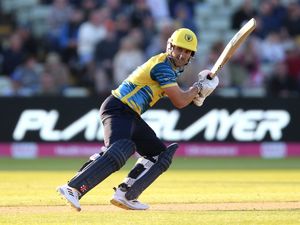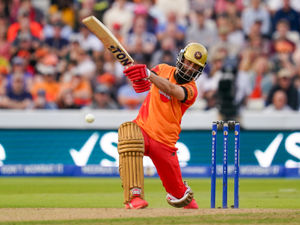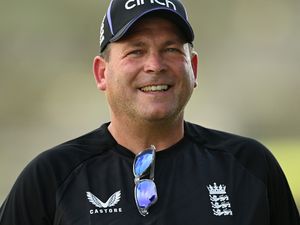Matt Maher: Ben Stokes running out of gas should be fuel for thought
There’s a decent chance we will one day look back at this week as a defining one for cricket.
Perhaps not, however, in the way Ben Stokes would like it to be.
Stokes’ decision to quit one-day international cricket was chiefly motivated, as all such decisions should be, by self-interest and a desire to protect his career in other formats.
But there was also a refreshingly blunt message delivered to the sport’s administrators about the “unsustainable” schedule Stokes felt left with him with little choice.
“We are not cars where you can fill us up with petrol and let us go,” he remarked, when describing the increasing burden on players.
“This should be a wake-up call,” added Jos Buttler, England’s new white-ball captain who just a few weeks into the job must begin planning for next year’s World Cup defence without one of the country’s biggest talents.
Will it though? One of cricket’s finest players, who at the age of 31 should be in his prime, stepping away from the format in which he enjoyed arguably his finest hour should be enough to set alarm bells ringing.
And yet in some senses we’ve been here before.
Those with long memories will remember Kevin Pietersen retiring from white-ball cricket a decade ago, with words eerily similar to those used by Stokes.
Since then, the international schedule has only become more congested.
From the beginning of last month until the end of next March, England will play more than 100 days of international men’s cricket, including 12 Tests, 18 one-day internationals, 19 T20 internationals and a T20 World Cup, with the fixtures taking place in seven different countries.
Beyond that, the ICC Future Tours programme due to be signed off next week has England playing 42 Test matches, 44 ODIs and 52 T20 internationals between 2023 and 2027. That does not include tournaments, or any other series used to fill gaps in the calendar and make more money, the latter appearing to be the most critical commodity when it comes to scheduling.
Rather than force a rethink of priorities among the sport’s administrators, Stokes’ retirement from 50-over cricket is more likely to prove a watershed moment for a format which increasingly finds itself on an uncomfortable middle ground, not as popular as Test cricket and nowhere near as lucrative as T20.
It will not be a quick death. The next three World Cups have already been scheduled up until 2031, with Champions Trophy tournaments in between.
But consider the fact that when introducing The Hundred, the ECB opted to relegate the One-Day Cup to a development competition, rather than the T20 Blast – which might be considered a more natural rival to the all-shining, expensive new tournament – and you get a fair reflection of the direction of travel.
It is a point which bears repeating: England, just three years after becoming world champions in 50-over cricket, are now in a position where its best domestic players never play in the format outside the international arena. Hardly conducive, you would say, to developing the next generation of talent? For the explanation, as always, follow the pound signs.
Stokes isn’t the first player to decide he can no longer play in all formats and he won’t be the last.
The biggest losers in all of it are the supporters. There will no doubt be some who bought tickets for today’s ODI between England and South Africa at Old Trafford in the expectation they would get to watch Stokes in the flesh.
Tickets for international cricket are not cheap and securing them isn’t always easy unless you are prepared to pay well in advance.
Yet the necessity to rotate players means there are increasingly fewer guarantees of seeing the biggest names. England have used 32 different players in international cricket since the start of June.
At some point the product starts to suffer.
On that note, it was difficult to get too worked up about England’s series defeat to India.
The whole thing felt rushed, done and dusted in the space of a week and crammed, along with a three-match T20 series, between the delayed fifth Test from last summer and the start of South Africa’s tour, while also clashing with the knockout stages of the Blast and in turn devaluing that competition.
The India series was, admittedly, delayed from last year when Covid concerns brought an abrupt end to the tour. Less easy to fathom is the scheduling of a limited overs series against Australia, immediately after this autumn’s T20 World Cup. On the other hand, this is one of the few summers when the Aussies won’t be in England to compete in some format or other.
Cricket is far from the only sport at risk of overplaying its hand and boring its audience with a fixture list which features the same teams playing each other again and again.
Witness Fifa’s determination to expand the World Cup or play it every two years, or the future expansion of the Champions League. Bigger doesn’t necessarily mean better is not a lesson which seems to register with many sport administrators.
Yet cricket is in a rather unique situation where different formats are competing for dominance. Finding a schedule in which they can co-exist, to the benefit of players and supporters, has so far proven well beyond its custodians.
Eventually, to echo Stokes, something has to give. Right now, it is the 50-over game clearly in the firing line.





